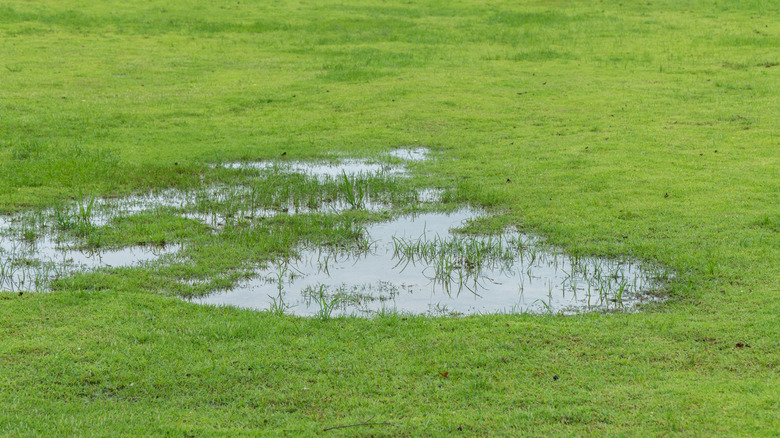What Puddles In Your Yard Can Tell You About Your Lawn's Condition
Taking care of your grass takes hours of hard work and dedication. But what happens when you see standing water after a rain shower or your daily watering? You waited a few hours, or even a day, and that stagnant water is still there. Did you know that the puddles in your yard can give you some insight into your lawn's condition? Those frequent, slow, or non-draining spots that keep popping up may indicate that you have a serious soil issue — compaction. To test your soil, grab a screwdriver and stick it into the ground. If you cannot break the surface or the tool only goes down an inch or so, your dirt is too tight.
Soil compaction is where the earth presses tightly together, closing the breathable pores and cutting off air supply and nutrients to a plant's roots. Without proper circulation and vitamins, your yard may begin to suffer the consequences, like foundation issues, pest attraction, water damage on property, plant root rot, and soil erosion. If you notice water pooling, do not step in the soggy zones. Instead, stop watering and let the area dry up as much as possible. Once it has dried up, take this chance to fix your waterlogged lawn and prevent future compaction by aerating your soil and cutting back on your watering schedule.
Aerate your soil and cut back on your water schedule to alleviate lawn puddles
Easily fix standing water issues by aerating your lawn for healthier grass and reducing its water intake. Start by making sure your loam is damp. Then use a spike aerator, running it over the targeted area. End by spreading out grass seed and fertilizer on your lawn and then watering. Want to save money on equipment? Take the drill or pitchfork you have stored away, manually punching holes in the earth. While most typical lawns only need to be aerated once a year, you may need to do it a few times, especially in the areas where your soil compacts.
Cutting back on watering your grass is an easy way to help with soil compaction. This gives your wet loam some time to dry up without being bombarded with constant puddles. You may want to switch to the best time of day to water a lawn, early morning, letting the sun help with evaporation. You could also change to less watering, but deeper sessions, truly penetrating the roots. You do not have to reduce your watering forever. Once the area shows signs of improvement, like seed germination and healthy growth, you can return to the normal care instructions for your grass and USDA zone.

